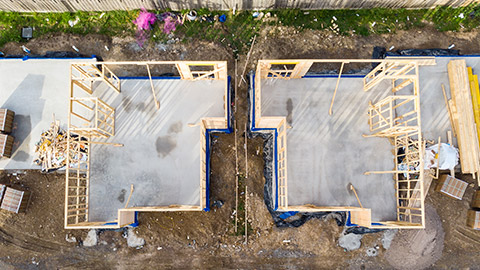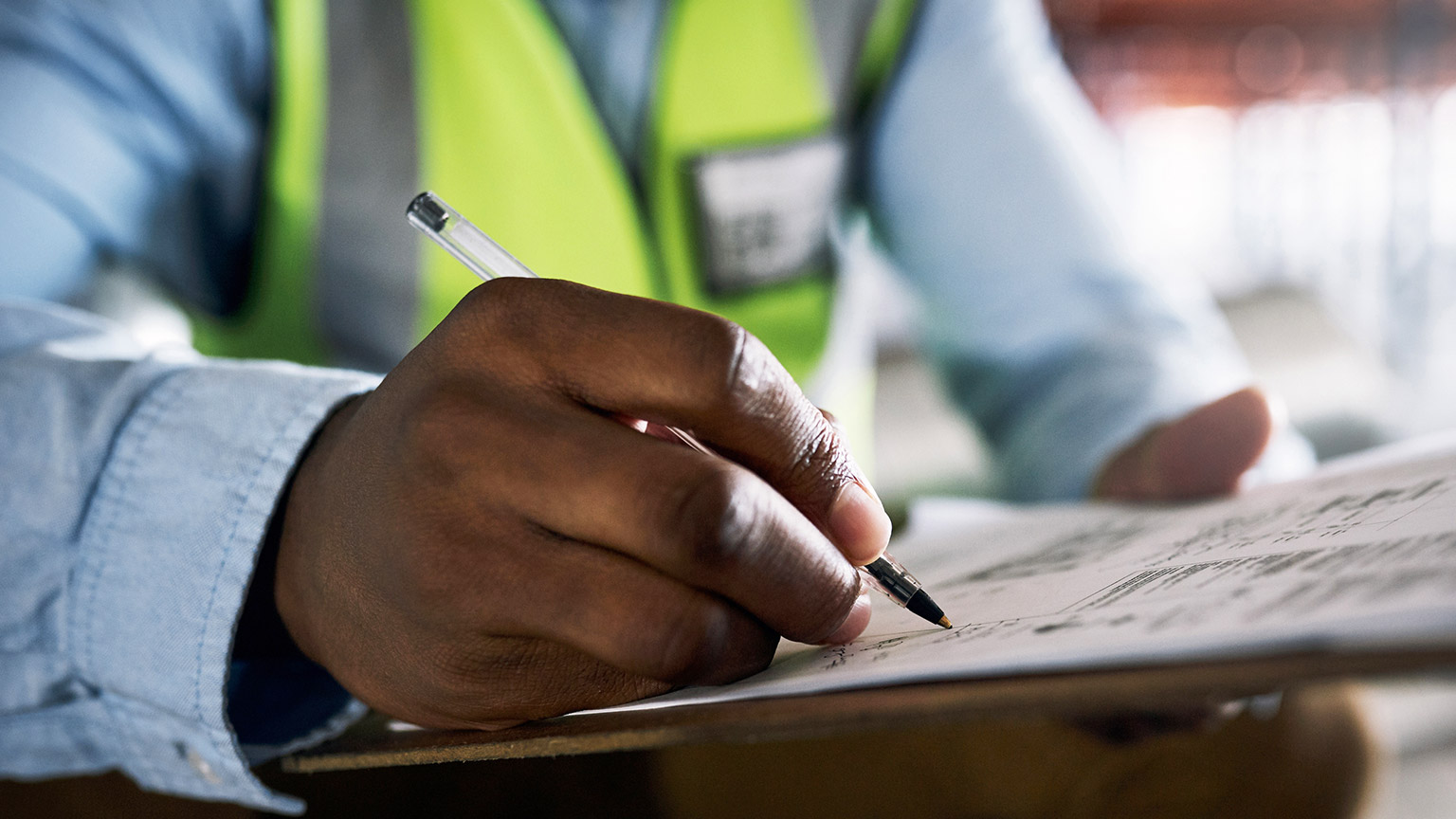Our aim in this topic is to:
- Understand the different types of Building Governing Legislation.
- Understand the different Building Control terminologies.
- Interpret the structure of the Building Control Framework.
- Distinguish the difference between the Building Act and the Building Code.
- Recognise the Building Code Clauses and New Zealand Standards.
Compliance means following the rules and standards set by authorities or companies.
It involves sticking to these guidelines to ensure everything is done correctly and legally. By complying, people and organisations ensure they're following the right way of doing things and avoiding any problems or violations of the established rules. This includes keeping an eye on how things are done and reporting on whether they are being done in line with the set standards or not.
Building compliance in New Zealand
In New Zealand, this means following rules and guidelines that control how buildings are made. These cover things like safety, quality, and how the building should be constructed. Compliance makes sure buildings meet legal and industry standards, ensuring they're safe, strong, and made the right way to create a good living and working environment.
- Building compliance regulations are primarily set by the New Zealand Building Code. The Building Code, managed by the Ministry of Business, Innovation and Employment (MBIE), establishes the minimum requirements and standards for the design, construction, and maintenance of buildings and structures.
- The Building Act 2004 and associated regulations provide the legal framework for building compliance, including detailed requirements for areas such as structural stability, fire safety, weather tightness, accessibility, and energy efficiency.
- Regulatory authorities, councils, and government bodies oversee and enforce these standards to ensure that buildings in New Zealand meet prescribed compliance measures, fostering safe and habitable built environments.
Terminologies
Let's review the terminologies that are widely used through documentation and standards. The following are just a few of the most relevant to any construction structure that Mitek New Zealand, a company specialising in providing solutions and technology for the construction industry, has outlined.
Main legislations
Within the construction industry, there are eight main legislations we need to be aware of:
- The Building Act 2004.
- The Building Regulations 2004.
- The Hazardous Substance New Organism Act 1996.
- Fire and Emergency New Zealand Act 2017.
- The Historical Places Act 1975.
- Resource Management Act 1991.
- Health and Safety at Work Act 2015.
- The Fencing of Swimming Pools Act 1987.
All building work in New Zealand must meet certain standards in their associated legislation and regulations.
The following is a question set of 3 for you to complete.
The legislation and regulations work together, and their partnership is called the "Building Performance System or Building Control Framework".
- Building Act 2004 - primarily legislation governing the building and construction industry. Sets out the construction, alteration, demolition, removal and maintenance rules.
- Building Code - contained in section 1 of the Building Regulations 1992, the code sets the minimum performance standard buildings must meet to meet the act.
- Building Regulations - details for particular building controls which contain prescribed forms like a list of specialised systems, definitions of 'change of use' and 'moderate earthquake'.
All of these three forms related to construction are mandatory by law.
The Building Act and its regulations work alongside other government legislations, including:
- Resource Management Act
- Fire Service Act
- Health and Safety at Work Act 2015
- Local Council bylaws
- As well as laws specifying certain plumbing, gas, and electrical work.

In 1992, New Zealand construction legislation changed from a perspective to a performance-based building control. The focus of these building regulations changed from “told you what to do” to a system that “tells you what you must achieve”. (BRANZ)
The purpose of this new 2004 Building Act is to provide for and maintain necessary controls related to the building work being constructed and the use of the building and to ensure that the building is safe to live in and use.
This law sets out the rules for various construction activities, including the building, alteration, demolition, and maintenance of buildings, including specific systems. The Building Act serves the following purposes:
- Regulation of building work: It oversees construction activities, establishes a licensing system for builders, and sets performance standards for buildings.
- Safety and wellbeing: The Act aims to ensure that buildings are safe, support the health and well-being of occupants, and allow for safe evacuation in case of a fire.
- Promoting sustainable development: It promotes sustainable construction practices to encourage environmentally friendly building designs and usage.
- Accountability and compliance: The Act aims to hold responsible parties, including owners, designers, builders, and building consent authorities, accountable for adhering to the building code standards and regulations.
A full explanation of the Building Act (226 pages) and its place within New Zealand building regulations is available as a resource from the Department of Building and Housing - New Zealand Building Code Handbook.
The Building Act does not place any controls on aesthetics or any non-essential building features. This is placed on the building owners' own interests.
In New Zealand, building regulations represent essential legislative documents that detail specific rules and requirements governing various aspects of construction and building standards within the country.
These regulations include diverse guidelines and frameworks designed to ensure the safety, integrity, and compliance of structures with prescribed standards.
They are not directly passed by Parliament but are formulated under the authority granted by an Act, serving as a crucial set of guidelines for building construction and management. Here are specific Building Regulations implemented in New Zealand:
- Building (Exempt Building Work) Order 2019: This order outlines exemptions or activities that do not require building consent, establishing a list of building works considered exempt.
- Building (Forms) Amendment Regulations 2019: This amendment focuses on prescribed forms used within the construction and building process, potentially updating and refining the documentation required for various applications and procedures.
- Building (Levy) Regulations 2019: These regulations set out the specifics regarding levies and fees associated with building consent processes, potentially establishing rates and structures for fees within the construction industry.
- Building (Product Certification) Amendment Regulations 2019: This amendment deals with product certifications, potentially adjusting or modifying the certification processes for building materials and products.
- Building (Specified Systems, Change the Use, and Earthquake-prone Buildings) Amendment Regulations 2019: These amendments focus on specified systems, changes of use, and earthquake-prone buildings, potentially refining definitions and requirements for these aspects within the building framework.
The range of building regulations serves as a framework that addresses diverse components of construction, ensuring that construction projects adhere to safety standards, compliance, and specified criteria set by these regulations.
They play a crucial role in shaping the building environment ensuring integrity, safety, and legal compliance within the construction industry in New Zealand.
Legislative instrument
An example of a legislative instrument would be the ‘Building (Forms) Amendment Regulation 2004', which sets out all the required documentation and forms for certain circumstances.
These forms are then used by Building Consent Authorities (BCAs) and Territorial Authorities (TA) to administer consent applications or Code of Compliance Certificates.
Complying with the Building Code requires that all proposed project plans and their specifications of the build are looked through and then assessed by a Building Consent Authority (BCA). In most cases, these are the local council members to which the project is being constructed.
This process is to ensure that all proposed work will comply with the requirements set out in the Building Code.
If the BCA is satisfied, then the process work will comply. Then, the BCA will issue a “building consent”, and work on-site can commence.
If you have no building consent, you can not build.

Let’s look at our third framework - Building Code.
The New Zealand Building Code outlines the minimum requirements for buildings to achieve. The Building Code is a performance-based system, meaning it only states how a building must perform in certain ways rather than describing or specifying how it must be designed and or built.
By focusing on how the building must perform rather than how it is built, designers, architects, and builders can meet the building standards innovatively to meet the client’s or council’s needs.
To be granted building consent from the Building Consent Authority, this party must have evidence of compliance.
The code covers aspects of the construction manner or process. This includes areas such as:
- moisture
- safety of users
- demolition
- energy efficiency
- stability of the structure
- fire safety and protection
- applying and receiving a Code of Compliance Certificate
- building meeting the requirements for the building consent
- ensuring the safety of users on the premises who are in the building undergoing building work
- using a licenced builder to construct the required building part
- ensuring the building is safely maintained
- ensuring the fire safety of the building and its occupants
- guardrails, access, and egress, particularly for persons with disabilities
Building Code Categories
These building work processes are divided into eight categories, all possibly undertaken within construction; these are called “clauses”.
Within these clauses, these provisions state how that building must perform. It outlines the performance standards and functional requirements the intended building work must meet, even in cases where a project does not need building consent.
In these eight categories, there are 41 clauses. Each of these Building Code clauses is identified by a letter: A to H, followed by a unique number breakdown.
For example, clause A, which is for “General Provisions”, contains the three following numbers.
- A1 Classified Uses,
- A2 Interpretation
- and A3 Building Importance Levels.
Each of these technical clauses describes the performance required by building in a specific area in order to meet the Building Code requirements.
These Code clauses are set out in three distinctive parts.
- Objectives
- Functional requirements
- Performance criteria
Each clause has an objective, and there may be specific products and or determinations under each clause. The objectives of these clauses are so that the building work carried out meets the work or performance functions set out by the Building Act.
Building Code example - E External moisture clause
The E2 External moisture clause concentrates on preventing water from infiltrating buildings from the outside. It outlines construction requirements to avoid issues like dampness, decay, and mould caused by moisture ingress. This clause emphasises the need for proper design, materials, and construction methods to resist external moisture.
It focuses on elements like walls, windows, roofs, and cladding systems, detailing guidelines for a weather-tight envelope and measures to prevent water damage within the structure. Under this clause, builders aim to construct durable, safe, and long-lasting buildings that effectively manage moisture and maintain a habitable environment.
Building Code example - C Fire safety clause
The C - Fire safety clause in the New Zealand Building Code outlines rules for making buildings safer in case of a fire. It covers:
- Fire-resistant materials: Requirements for using materials that resist fire and slow its spread.
- Escape routes: Ensuring buildings have clear and safe ways for people to escape during a fire.
- Fire detection and alarm systems: Guidelines for installing systems that detect fires and alert occupants.
- Firefighting equipment: Requirements for having equipment like extinguishers to tackle fires.
- Structural fire performance: Rules for ensuring the building’s structure can withstand fire.
The clause aims to provide clear instructions for building design, construction, and maintenance to reduce fire risks, protect people, and enable safe evacuation during fire emergencies.
The following is a question set of 3 for you to complete.

We have covered all the mandatory standards in the previous subtopics. Let’s look at the non-mandatory standards next.
Compliance Paths
Compliance paths provide alternative routes or methods available within the building regulations that enable builders, designers, or project managers to meet the prescribed standards outlined by the regulatory authorities. These compliance paths offer flexibility within the building code by providing options or different approaches to achieve compliance and adhere to the required standards.
Compliance paths in the building framework context are:
- Alternative Routes: They offer different methods to meet building regulations.
- Flexibility in Compliance: Allow builders and designers to adhere to standards using various approaches.
- Multiple Solutions: Provide choices to meet required safety and quality criteria.
- Accommodation of Innovation: Enable innovative solutions or diverse approaches to meet compliance.
- Adherence to Standards: Maintain essential safety and quality requirements while accommodating different construction methods, materials, or designs.
Evidence must be demonstrated using one or more paths; the applicant can choose which path or paths the project will follow.
Verification Methods
Verification methods and acceptable solutions are compliance methods and documents that comply with the performance requirements. The New Zealand standards cited by the building code have the same status as verification methods and acceptable solutions; these standards are identified by the particular clause they refer to and a number.
Other methods of meeting the NZ building code’s performance criteria must be accepted by the Building Consent Authority (BCA) - these include things like NZS 4121, Product Certification, energy work certificates, and determinations.
Acceptable Solution
Within New Zealand, our standards are identified by the letters NZS followed by a unique number, the date, and the title of the standard. Standards are used as an Acceptable Solution to the Building Code for a specific type of construction. Here are some examples:
- NZS 3604 for timber and wood-based products.
- NZS 3604 for use in the building for timber framing and durability of components used with timber.
- NZS 4229 for concrete masonry buildings not requiring specific design.
- NZS 4251 for solid plastering, including stucco cladding.
The BRANZ House building guide sets these standards to provide the means to verify that a product or material will meet the performance requirements of the Building Code. These standards are also designed to set the required standard for manufacturing a particular material or component.
With the exception of “Alternative solutions”, these selected paths must be accepted by the building consent authority as meeting the performance requirements of the building code.
To understand the different compliance paths, please read pages 8 & 9 (section 3) of the New Zealand Building Code Handbook.
Determinations
Determinations are legally binding rulings made by (Ministry of Business, Innovation, and Employment) MBIE where there has been no doubt or dispute about building work. Alternative solutions provide pathways for other methods of complying with the building code. When applying for building consent using an alternative solution, sufficient information about the building product or system must be provided.
Once the BCA has accepted it, the alternative methods become an alternative solution.
Alternative Solutions
An alternative solution is a building solution that differs partly or wholly from the solutions offered by the Compliance Documents (Acceptable Solution or Verification Method). Still, these solutions achieve compliance with the performance requirements of the Building Code to the satisfaction of the BCA.
When applying for building consent using an alternative solution, sufficient information about the building product or system must be provided to the BCA so that it can determine whether the solution meets the performance criteria of the code or not.
Several approaches can be used to demonstrate to the BCA that an alternative method will comply with the code's requirements.
These could include:
- an expert's opinion.
- a comparison with an acceptable solution with slight minor variations.
- a comparison with other documents, which may include standards, technical information tests, or any research evidence.
- a comparison to a previously accepted alternative solution, which must demonstrate that the solution is working in practice and how it is directly comparable and relevant to the proposed situation.
- a comparison within service history that uses documented credible evidence to compare the proposed work to an existing similar type of construction.
- a comparison with a previous determination, which must demonstrate the solution is directly comparable and relevant to the proposed situation.
When we use certain building products, the quality of that product or process for doing something can sometimes be replaced with a certain quality certification. These certificates confirm the requirements and characteristics set out by other parties.
Having good certification outcomes may enhance a company's reputation and client satisfaction. However, the scope and aim of these quality marks are variable, and an in-depth understanding is required to know what they truly mean.
- Certificate of origin: in this case, the manufacturer states that the product complies with some specifications.
- Accredited laboratory test certificate: the test is performed on a small sample; be mindful that they cannot guarantee all production. These certificates should be used with caution due to their limited scope.
- Standard compliance seal or mark: When the product or material is very new, and there is no specific standard to regulate it, the certificate is issued as technical suitability documentation.
Standards New Zealand and Australia
Standards in the construction industry provide practical information and guidelines to define or set out the specifications, methods, and procedures to be used. They are developed by ‘Standards New Zealand’ and are often in partnership with our Tasman members in Australia (Standards Australia).
Standards developed jointly by New Zealand and Australia have the prefix AS/NZS.

Respiratory protective devices
Here is an example of a certification that describes a range of respiratory protective devices. There will be an accompanying text next to the standards logo, for example:
- AS/NZS176:2012 (Australian/New Zealand Standard Number)
- Lic 1508 SAI Global (Licence assigned after Certification has been granted)

This standard specifies requirements for respiratory protective devices (respirators) intended to provide, according to type, varying degrees of protection against atmospheres containing substances that may be harmful if breathed; also, with certain types, to provide protection against atmospheres that may be deficient in oxygen. Further information on this standard is available on the Standards New Zealand website.
Aim of standards
These documents aim to guarantee the uniformity of the system and the process within these documents, which is why they are called the standards. The objectives of having standards are simplification and quality. In any project, the set of construction tasks carried out is complex and should have standards to maintain consistency.
When tasks are carried out to these standards, they are called “procedures”, and then this describes how that activity or process needs to be carried out or established to meet the requirements or their processes.
At the start of any project, you would see the ‘procedures’, which are drawn up by the company itself or the people in charge, outlining the requirements needing to be established to meet the standard.
These document records must include key control points as well as times of inspection. In every case, the control of a procedure should be documented and stored in the project’s records and filed safely on-site.
Explore
The next time you are at a worksite, hunt for product packaging carrying a logo and certification of Standards New Zealand or Australia. Think about why this product was chosen over the other products. Take a photo, and share and discuss your findings during one of the live sessions with your tutor and peers.
